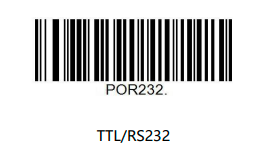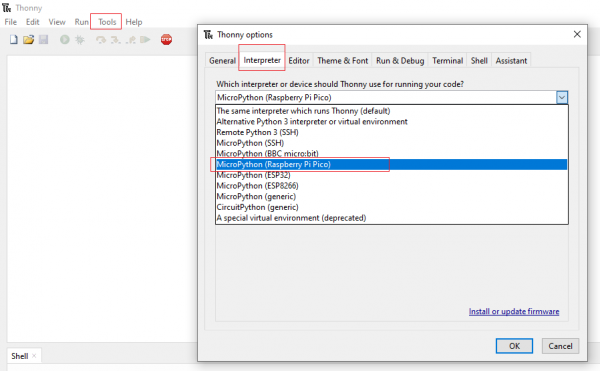Difference between revisions of "LoRa-HAT-for-Raspberry-Pi"
From SB-Components Wiki
| Line 1: | Line 1: | ||
| + | <div class="row"> | ||
| + | <div class="large-8 column"> | ||
== LoRa HAT for Raspberry Pi (433/868/915) == | == LoRa HAT for Raspberry Pi (433/868/915) == | ||
LoRa™ HAT, a low-power consumption data transmission module, comes with an onboard CH340 USB TO UART converter, Voltage Level Translator(74HC125V), E22-900T22S and E22-400T22S SMA antenna connector, IPEX antenna connector, LoRa™ Spread Spectrum Modulation technology with auto multi-level repeating. | LoRa™ HAT, a low-power consumption data transmission module, comes with an onboard CH340 USB TO UART converter, Voltage Level Translator(74HC125V), E22-900T22S and E22-400T22S SMA antenna connector, IPEX antenna connector, LoRa™ Spread Spectrum Modulation technology with auto multi-level repeating. | ||
| − | + | == Features == | |
* Communication range up to 5 KM | * Communication range up to 5 KM | ||
* Supports auto repeating to transmit longer | * Supports auto repeating to transmit longer | ||
| Line 35: | Line 37: | ||
Open M0, open M1: Deep sleep mode | Open M0, open M1: Deep sleep mode | ||
| − | + | == Specifications == | |
| − | |||
| − | |||
* Frequency - 915/868/433 MHz | * Frequency - 915/868/433 MHz | ||
* Power - 22dBm | * Power - 22dBm | ||
| Line 44: | Line 44: | ||
* Serial Port Module - E22-900T22S/E22-400T22S | * Serial Port Module - E22-900T22S/E22-400T22S | ||
* Voltage Level Translator - 74HC125V | * Voltage Level Translator - 74HC125V | ||
| − | |||
</div> | </div> | ||
<div class="large-4 column"> | <div class="large-4 column"> | ||
[[File:Lora_hat.png|thumb|left|alt=LoRa HAT for Raspberry Pi| Buy it From : ''[https://shop.sb-components.co.uk/collections/latest-collections/products/lora-hat-433mhz-868mhz Click Here]'']] | [[File:Lora_hat.png|thumb|left|alt=LoRa HAT for Raspberry Pi| Buy it From : ''[https://shop.sb-components.co.uk/collections/latest-collections/products/lora-hat-433mhz-868mhz Click Here]'']] | ||
| − | |||
</div> | </div> | ||
</div> | </div> | ||
| + | |||
| + | == Installation == | ||
| + | ===Setting up Pico Barcode Hat=== | ||
| + | * First you need to change the mode of the Pico Barcode Hat. | ||
| + | * Mode is TTL/RS232 (serial communication interface) for this you need to scan below the barcode, Connect USB to pico barcode hat. | ||
| + | [[File:RS232.PNG|400px]] | ||
| + | |||
| + | * Change the baud rate to (9600) for this you need to scan the below barcode by pressing the scan button on the Pico Barcode Hat | ||
| + | [[File:9600.PNG|400px]] | ||
| + | |||
| + | ==== MicroPython ==== | ||
| + | * Stack Raspberry Pi Pico on the female header of Pico Sense HAT. | ||
| + | * Connect USB cable on Raspberry Pi Pico USB port. | ||
| + | * Choose interpreter as MicroPython (Raspberry Pi Pico). | ||
| + | [[File:Thonny-interpreter.PNG|600px]] | ||
| + | |||
| + | * In the folder you see two files one is "st7789.py" and the other is "firmware.uf2" | ||
| + | * Save the "st7789.py" file in the pico ( this is the LCD library file ) | ||
| + | * For the second file "firmware.uf2" do this, Before raspberry pico connects to the laptop, press the boot button of the pico then connect to the laptop, you see the new device named "RPI-RP2". Drag and drop the "firmware.uf2" file to the RPI-RP2. | ||
| + | |||
| + | * In the folder you see a file name "Barcode_Scanner_demo.py", run this file, this is demo code. From this code, you easily understand the working of this module. using this basic code you make many applications. | ||
| + | |||
| + | * One of the applications we mention in that folder, the folder name is "smart attendance system". when you open this folder you see three file | ||
| + | * employee.py (the file you need to enter the employee name and the barcode of that employee (it is like a database )) | ||
| + | * main.py (the file you need to run (this is the main file )) | ||
| + | * servo_control.py ( this file controls the servo motor ) | ||
| + | |||
| + | * Save the three files in the pico, "main.py" file is automatically run when you give power to pico | ||
| + | |||
| + | == Resources == | ||
| + | <b> Github </b> | ||
| + | * [https://github.com/sbcshop/Pico-Barcode-HAT.git Source Code] | ||
Revision as of 10:15, 20 January 2022
LoRa HAT for Raspberry Pi (433/868/915)
LoRa™ HAT, a low-power consumption data transmission module, comes with an onboard CH340 USB TO UART converter, Voltage Level Translator(74HC125V), E22-900T22S and E22-400T22S SMA antenna connector, IPEX antenna connector, LoRa™ Spread Spectrum Modulation technology with auto multi-level repeating.
Features
- Communication range up to 5 KM
- Supports auto repeating to transmit longer
- Low Power Consumption
- Highly Secured
- For Evaluating signal quality with the RSSI or “Received Signal Strength Indicator”
- Wireless parameter configuration support
- Fixed-point transmission support
- SMA and IPEX Antenna Connector
- USB to LORaTM and Pi to LoRaTM Communication via UART
- Comes with development resources and manual
- LED Indicators:
RXD/IXD: UART RX/TX indicator
AUX: Auxiliary indicator
PWR: Power indicator
- Serial/USB selection Jumpers:
A: USB TO DART to control the LoRa module through USB
B: Control the LoRa module through Raspberry Pi
- Data/Command made selection jumpers:
Short M0, short M1: Transmission mode
Short M0, open M1: Configuration mode
Open M0, short M1: WOR mode
Open M0, open M1: Deep sleep mode
Specifications
- Frequency - 915/868/433 MHz
- Power - 22dBm
- Distance - Up to 5 KM
- Interlace - DART Communication
- Serial Port Module - E22-900T22S/E22-400T22S
- Voltage Level Translator - 74HC125V

Buy it From : Click Here
Installation
Setting up Pico Barcode Hat
- First you need to change the mode of the Pico Barcode Hat.
* Mode is TTL/RS232 (serial communication interface) for this you need to scan below the barcode, Connect USB to pico barcode hat.
* Change the baud rate to (9600) for this you need to scan the below barcode by pressing the scan button on the Pico Barcode Hat
MicroPython
- Stack Raspberry Pi Pico on the female header of Pico Sense HAT.
- Connect USB cable on Raspberry Pi Pico USB port.
- Choose interpreter as MicroPython (Raspberry Pi Pico).
- In the folder you see two files one is "st7789.py" and the other is "firmware.uf2"
* Save the "st7789.py" file in the pico ( this is the LCD library file )
* For the second file "firmware.uf2" do this, Before raspberry pico connects to the laptop, press the boot button of the pico then connect to the laptop, you see the new device named "RPI-RP2". Drag and drop the "firmware.uf2" file to the RPI-RP2.
- In the folder you see a file name "Barcode_Scanner_demo.py", run this file, this is demo code. From this code, you easily understand the working of this module. using this basic code you make many applications.
- One of the applications we mention in that folder, the folder name is "smart attendance system". when you open this folder you see three file
* employee.py (the file you need to enter the employee name and the barcode of that employee (it is like a database ))
* main.py (the file you need to run (this is the main file ))
* servo_control.py ( this file controls the servo motor )
- Save the three files in the pico, "main.py" file is automatically run when you give power to pico
Resources
Github



